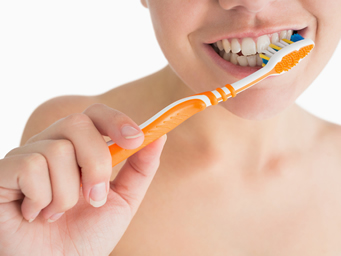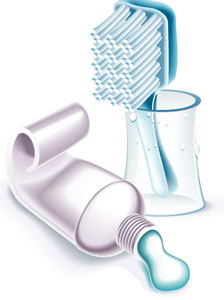By: P., Piero D.D.S.
 We’ve all heard the way to living longer is to stop smoking, lose weight, eat more fruits and vegetables, and exercise. However, there is one more way to increase your longevity. Keep your teeth clean.
We’ve all heard the way to living longer is to stop smoking, lose weight, eat more fruits and vegetables, and exercise. However, there is one more way to increase your longevity. Keep your teeth clean.
Periodontal disease is the most pervasive infectious disease on earth. Eighty percent of all adults have some degree of periodontal disease according to the U.S. Department of Health and Human Services, Office of Disease Prevention and Health Promotion. There are a multitude of links between periodontal disease and other diseases according to The American Academy of Periodontology. Some are: heart disease, stroke, diabetes, COPD, breast cancer, kidney cancer, prostatitis, low birth weights in children and even behavioral and psychosocial conditions.
Within the over 700 species of bacteria in the mouth are found those that cause this insidious disease. It is the plaque-producing bacteria that are the culprits that cause periodontal disease. These are the ones that live in the absence of air (anaerobic), like it warm, dark and acidic. The furry feeling one gets on their teeth is actually the excrement from these bacteria. Plaque then forms around the tooth from the sticky, acidic bio-film. The bacteria set up a water resistant shield. That’s why water alone (swishing or oral irrigating) cannot penetrate the grease barrier. In addition, gums act like a gasket around the tooth, further preventing air or water to reach the anaerobic bacteria along the gum line, making cleaning especially difficult.
Even after brushing, bacteria can sustain high levels if one has restorations, crowns, bridges, orthodontic appliances, wisdom teeth, implants, periodontal disease, or does not flossing. Any bacteria, whether it is good or bad, reproduce rapidly and exponentially. In one hour for example, if you start off with a bacteria population of 1x (1x being the amount of bacteria in your mouth after a professional cleaning – which you can’t achieve in the home), after one hour you have double the population of bacteria, and after two hours you have 4x, then 8x, 16x, etc. Even if a few areas in the mouth are poorly cleaned, those concentrations of plaque can repopulate other areas in the mouth. So, if you start with a bacteria population of 10,000x, in a few hours bacteria will quickly race out of control.
 Tooth brushing has a hard time reducing the plaque-producing bacteria in the mouth. The reason is one must a) break through the sticky shield with an abrasive, b) cleanse the site, c) aerate the site, and d) neutralize the acid. A tooth brush can’t access the sites between the teeth (where the bacteria thrive), consequently can’t break through the sticky film, nor aerate those sites, nor neutralize the acid. In addition, tooth brushing often causes abrasion and ridges along the gum line resulting in sensitivity to hot and cold, because it is over aggressive on the cheek-side surfaces of teeth.
Tooth brushing has a hard time reducing the plaque-producing bacteria in the mouth. The reason is one must a) break through the sticky shield with an abrasive, b) cleanse the site, c) aerate the site, and d) neutralize the acid. A tooth brush can’t access the sites between the teeth (where the bacteria thrive), consequently can’t break through the sticky film, nor aerate those sites, nor neutralize the acid. In addition, tooth brushing often causes abrasion and ridges along the gum line resulting in sensitivity to hot and cold, because it is over aggressive on the cheek-side surfaces of teeth.
Flossing is no better. Only 5% of the population flosses their teeth, according to the American Dental Society. With flossing there is a possibility for gum lacerations and the floss can act as a contaminant bringing infection from one tooth to the other. Flossing does not aerate the site nor neutralize the acid.
It’s frustrating and not easy to keep teeth really clean. Really clean means a low population of bacteria in the mouth. Meticulous home cleaning at least twice a day is imperative. Seeing a dentist for professional cleanings at least twice a year is now being looked at as not enough. If you are at risk for any of the systemic diseases that are linked to periodontal disease, then three month professional cleanings are a wise investment. These efforts at home and in the dental office will benefit your overall health and longevity.
– Dr. Piero, a Holland, MI dentist for over thirty years, is the inventor of Dental Air Force. Articles published are on periodontal health related to heart disease, respiratory health, diabetes, strokes, and other systemic diseases. He is the Executive Editor for Journal of Experimental Dental Science, a contributing author to Hospital Infection Control: Clinical Guidelines and soon-to-be published book, Put Your Money Where Your Mouth Is.
